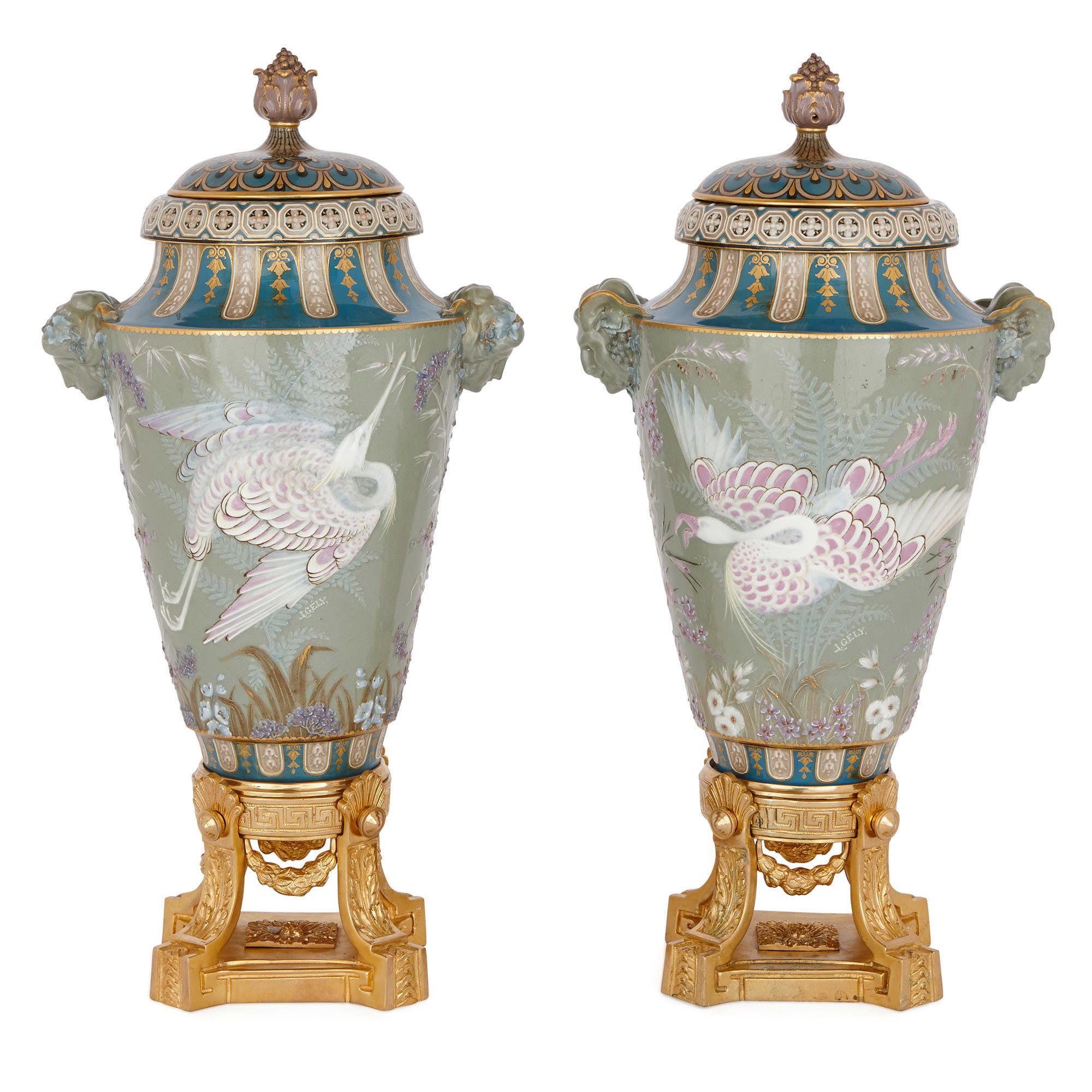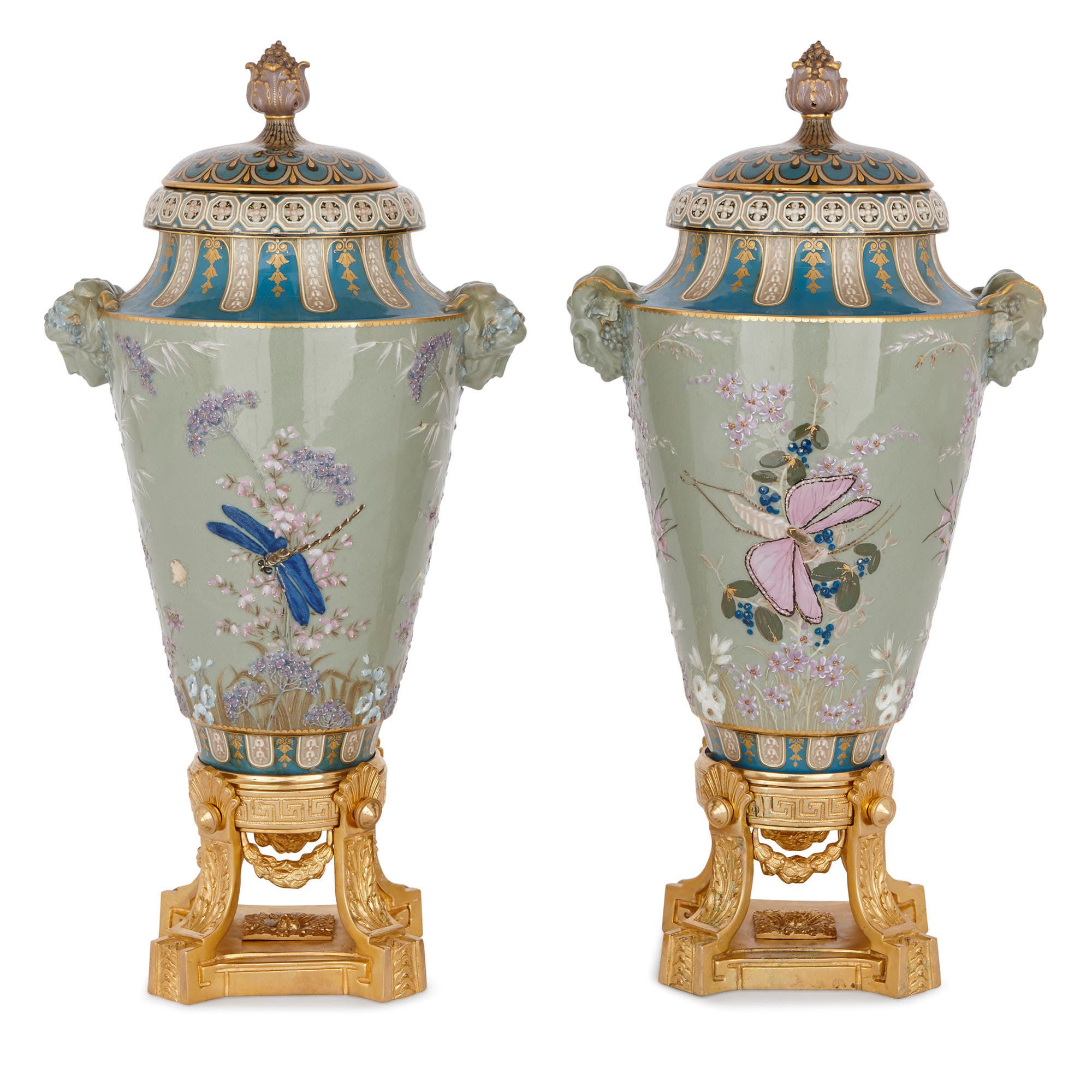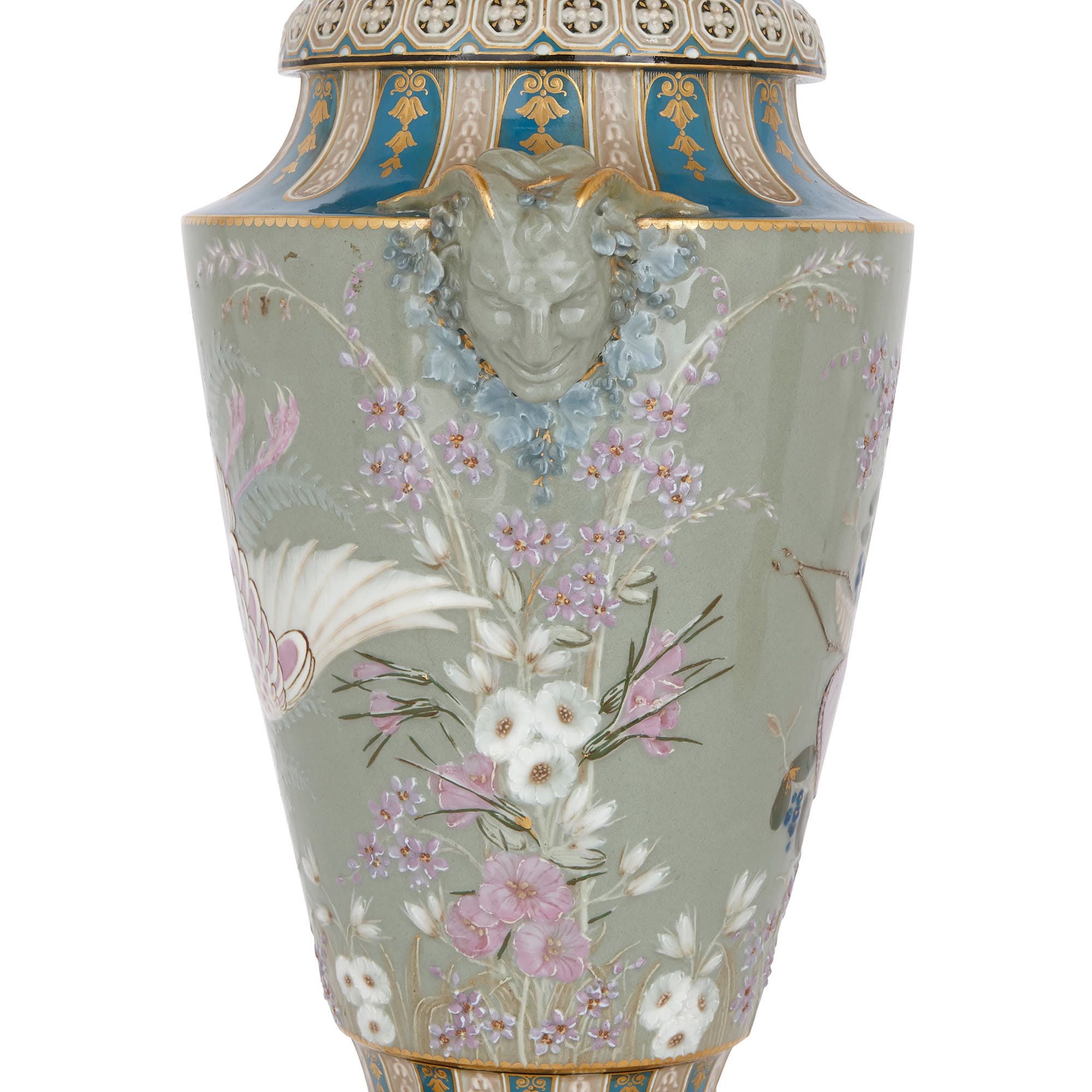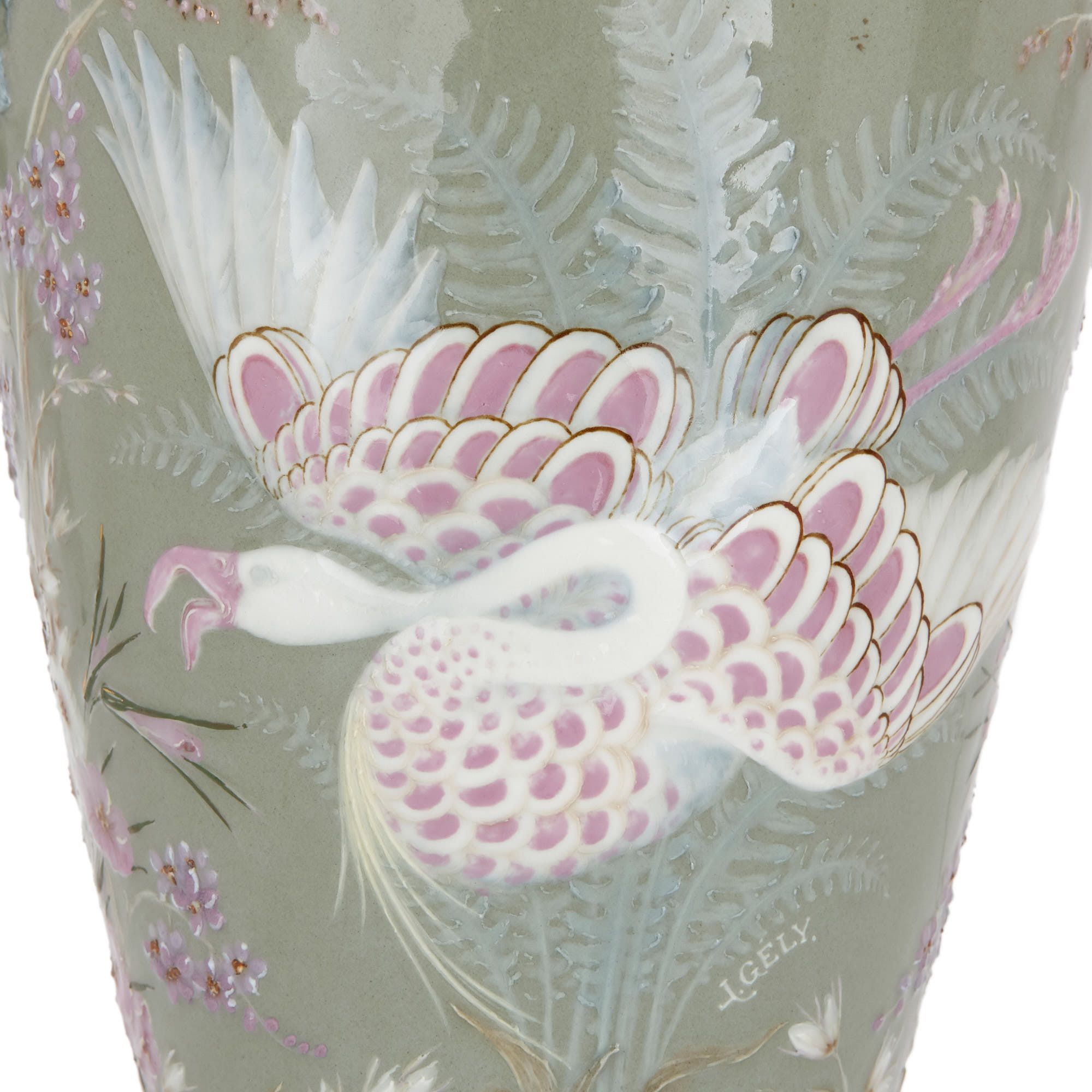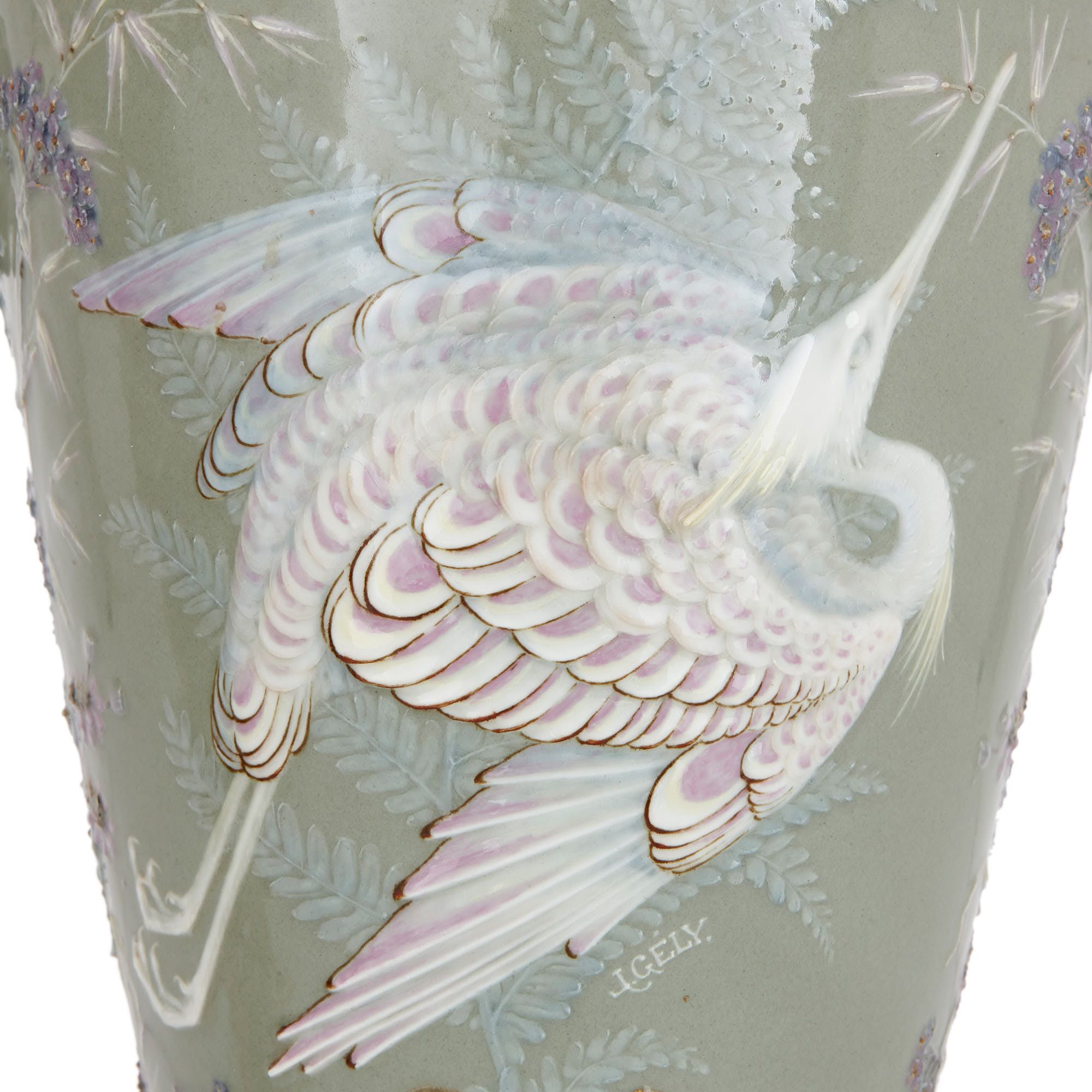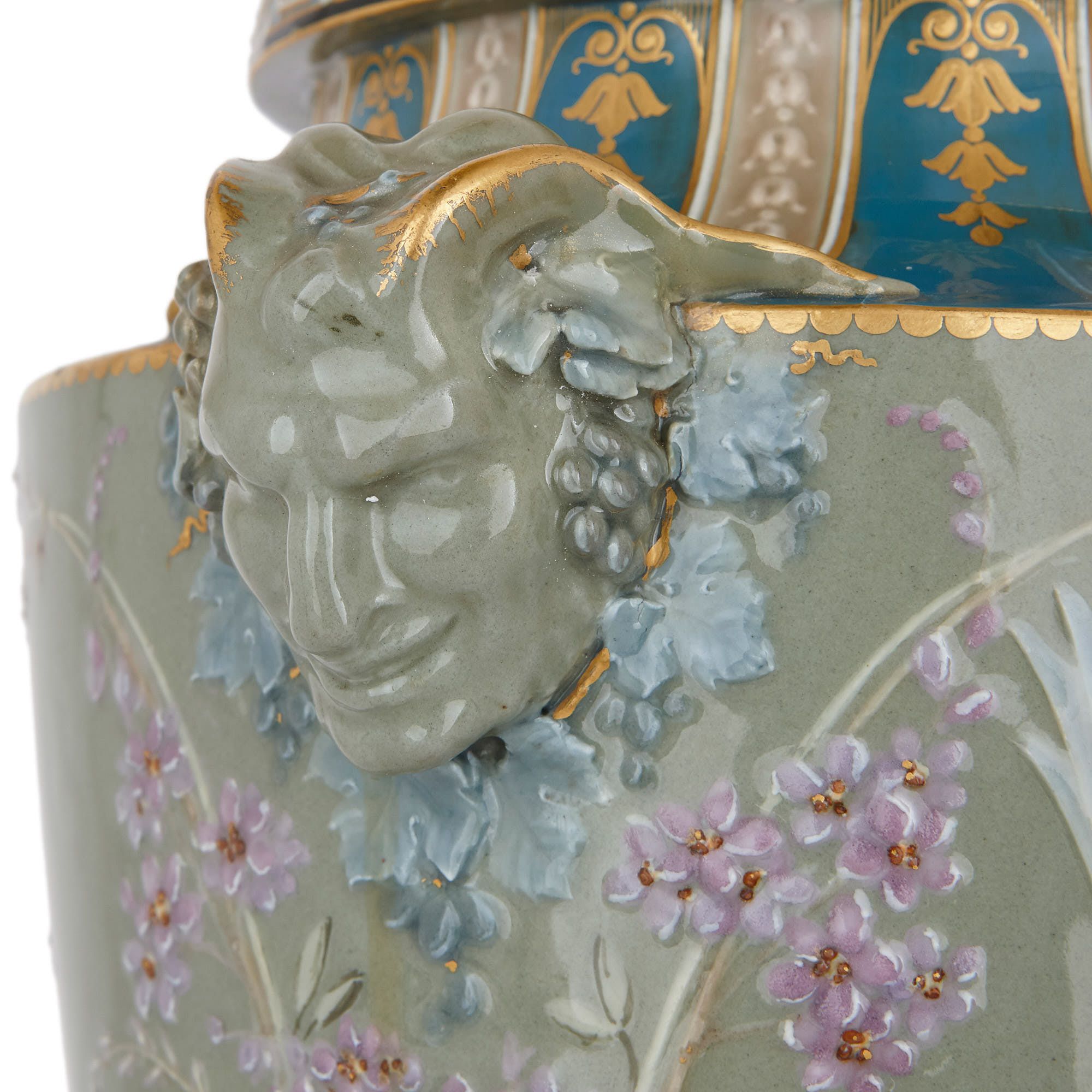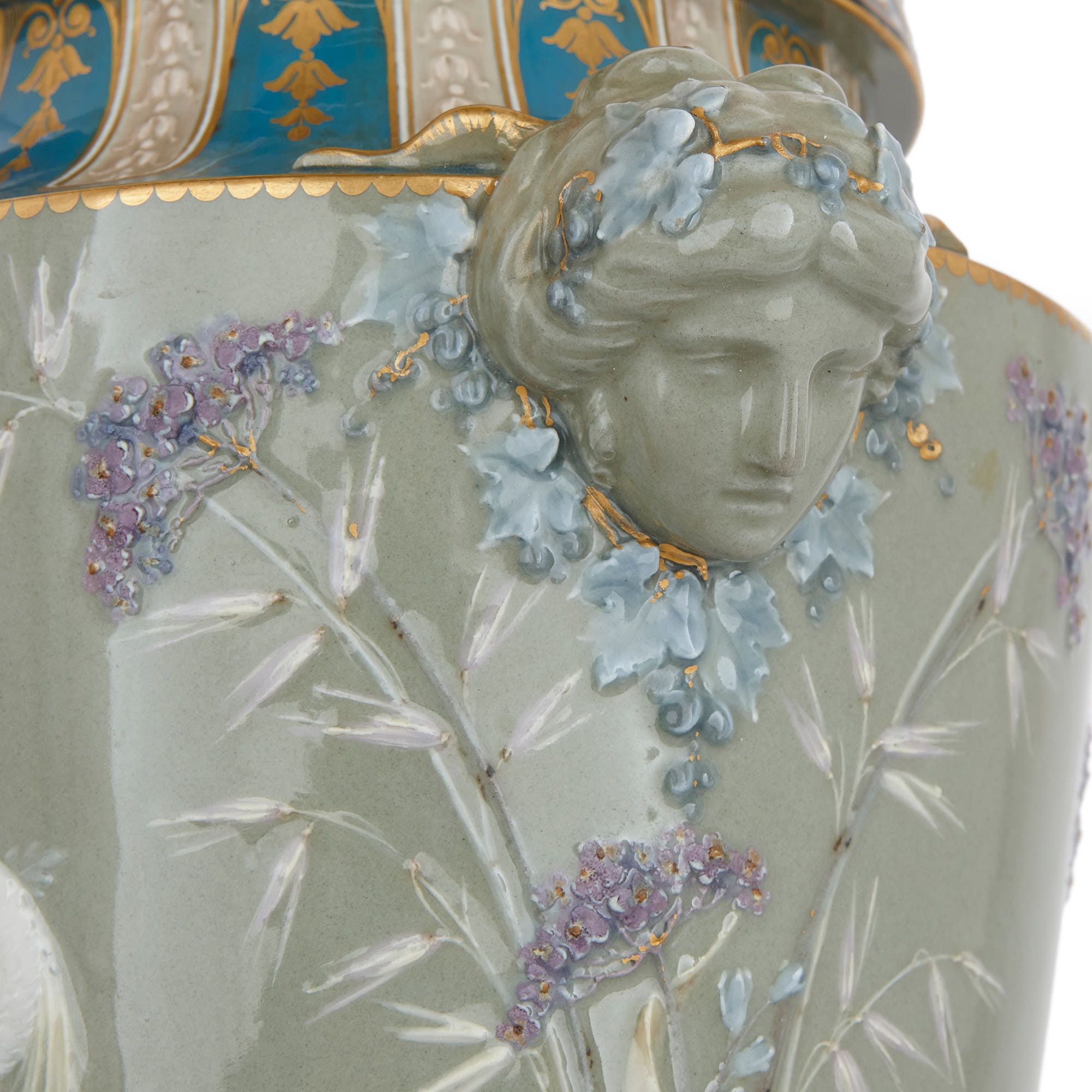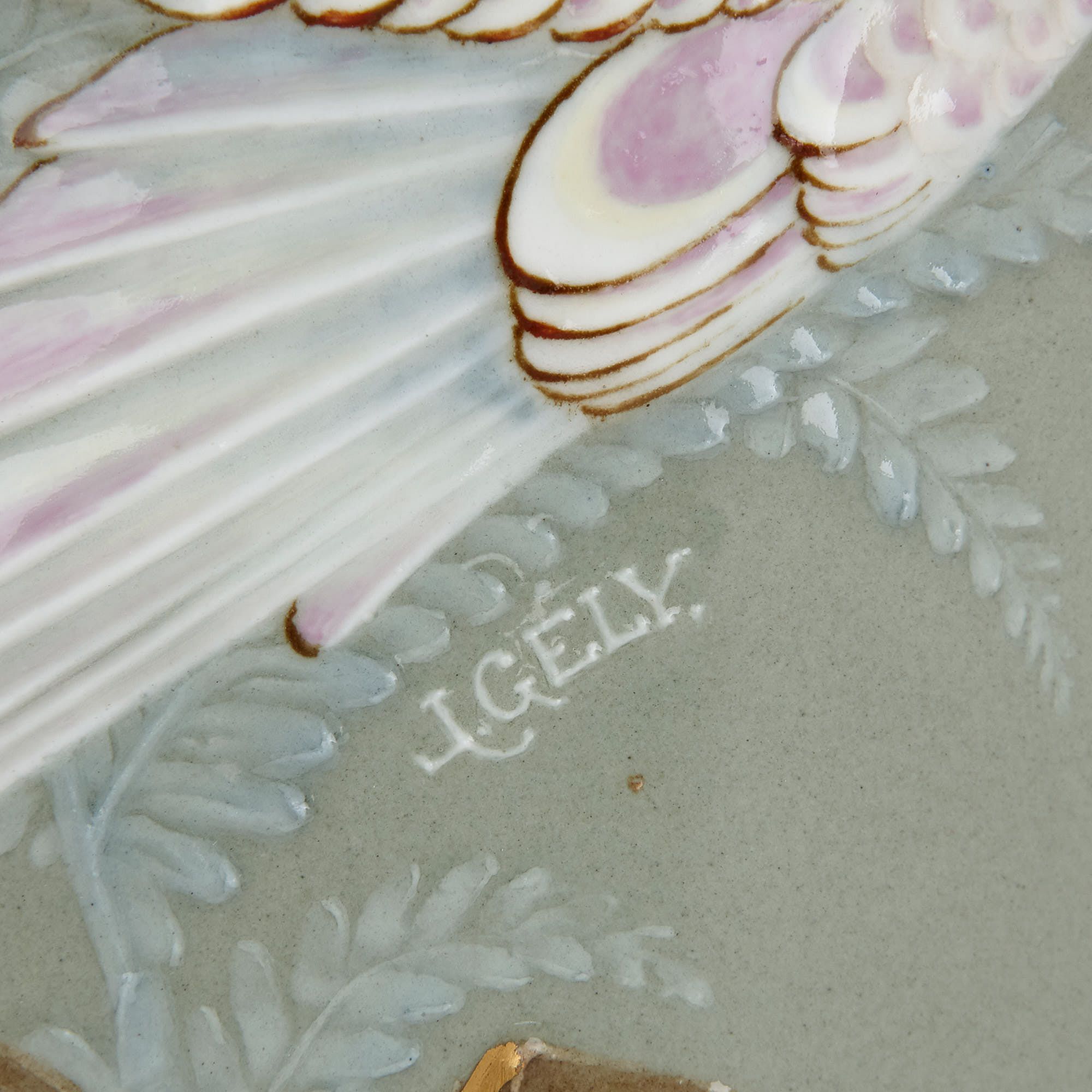These exquisite vases are the work of the master craftsmen of the Sèvres factory in France. Long recognised as the leading producer of fine porcelain goods, the Manufacture Nationale de Sèvres developed, over the course of the 19th Century, a number of new techniques for making and decorating porcelain which set them apart from their rivals.
One of these techniques was the technique of 'pâte-sur-pâte' (literally meaning paste on paste, also known as 'applied slip' decoration). The method was developed by the celebrated modeller, Leopold-Jules-Joseph Gely (French, 1820-1893), who is responsible for the decoration of this pair of vases. Pâte-sur-pâte involved applying liquid clay (known as slip) to the surface of the object with a brush, then firing and glazing it. In this process, the decorator worked without a mould, creating wonderful, free designs which were beautifully opaque.
In the 1850s, the Sèvres factory focused its efforts on perfecting the pâte-sur-pâte technique, and Gely was key to this. By the 1860s, Sèvres had mastered it, and they used the 1867 Paris Exposition Universelle as an opportunity to display some stunning pâte-sur-pâte vases, bowls and plates. These vases date from 1867, making it highly likely that Sèvres showcased them at the exhibition. Many pieces of these Sèvres exhibition pieces, and several works by Gely, can be found in the ceramic galleries of the Victoria & Albert Museum in London.
The pâte-sur-pâte decoration gives adds great beauty and texture to these vases. One vase is ornamented with a white and pink crane on its front, and a blue dragonfly on its reverse. The other vase features a pink and white bird, possibly a flamingo, on its front, and a blue butterfly on its back. These depictions are accompanied by pink, white and lilac flowers, all set against a celadon green ground.
There is a distinctly Japanese character to the pâte-sur-pâte bird paintings. Japanese style pottery had become extremely fashionable in Europe in the late 1860s due to Japan resuming trade with the West, and the subsequent import of Japanese goods into Europe.
With their natural colour schemes and motifs, these vases anticipate the Art Nouveau style, which would dominate the decorative art design in the late 19th and early 20th Century.
Each vase is fitted with two handles, taking the form of satyr heads, on one vase, and nymph heads on the other. The necks and domed covers are decorated with parcel gilt, grey and black floral motifs, placed against a blue ground. The covers are topped by parcel gilt light purple pomegranate finials. Each vase is set on an ormolu (gilt bronze) base, which is decorated with scallop shells, foliage and swags.
In the early 20th Century these vases were acquired by the screen and stage actor John Barrymore (1882-1942). Barrymore is regarded as one of the greatest American actors of the 1910s and 1920s, and of early Hollywood in general.
Each vase is signed to the front 'L. Gely' and marked 'S 66' for the Sèvres factory. They also feature a crowned ‘N 67’, the official cipher of the French Emperor Napoleon III, who was a major patron of the Sèvres Manufactory in the second half of the 19th Century.




